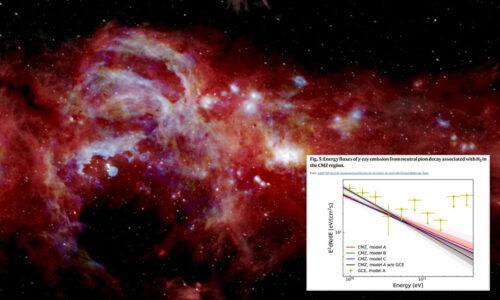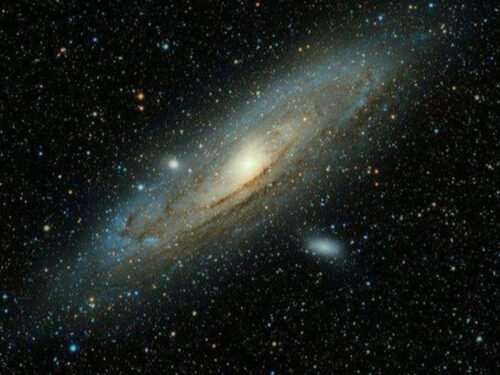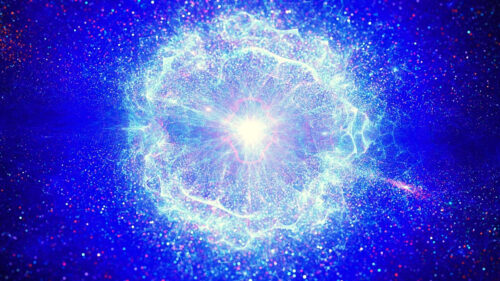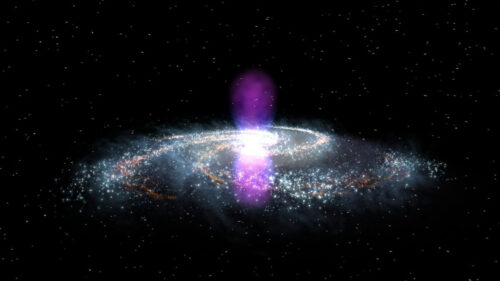
The enigmatic beauty of the Milky Way galaxy has captivated humanity for centuries. From ancient astronomers to modern-day scientists, the allure of our cosmic neighborhood has never waned.
Recently, researchers have stumbled upon a perplexing phenomenon nestled within the heart of our galaxy—a barrier that mysteriously prevents cosmic rays from penetrating the central region. This mind-boggling discovery has left scientists and stargazers alike yearning for answers, as they delve into the intricacies of this cosmic enigma.
At the core of this perplexing barrier lies Sagittarius A, a supermassive black hole situated at the center of the Milky Way. Scientists speculate that this cosmic behemoth could potentially be the catalyst for the barrier’s existence.
Sagittarius A is believed to serve as a cosmic particle accelerator, generating powerful cosmic rays that traverse the vast expanses of our galaxy. However, the precise workings and purpose of this barrier remain elusive, inviting a multitude of theories and raising new questions about the underlying nature of our universe.

For decades, astronomers have been baffled by peculiar structures concealed within the central region of the Milky Way. These enigmatic formations have long puzzled scientists, and the recent discovery of the cosmic ray barrier adds yet another layer of intrigue to this astronomical mystery.
To unravel the secrets of this extraordinary phenomenon, scientists have turned their attention to the radioactive gamma rays emitted when cosmic rays collide with ordinary matter. Through careful analysis, Chinese researchers have made significant strides in understanding the driving forces behind this cosmic conundrum.
Chinese scientists have discovered that a mysterious mechanism exists within the central region of our galaxy, capable of accelerating particles to astonishing speeds. The cosmic rays generated in the heart of the Milky Way disperse across the galaxy via intricate magnetic fields, creating a celestial sea of high-energy particles.
These findings shed light on the complex interplay between cosmic rays and the cosmic environment, further emphasizing the role of Sagittarius A* as a potential cosmic particle accelerator.

Despite these remarkable breakthroughs, the primary enigma remains—the central region of the Milky Way continues to maintain a lower density of cosmic rays compared to other regions. This puzzling barrier has become one of the most significant research questions in the field of astrophysics.
Scientists worldwide strive to unravel the inner workings of this enigmatic force, as understanding it could provide invaluable insights into the structure and composition of the Milky Way, as well as the broader universe.
The implications of comprehending this barrier are profound. It could illuminate the mechanisms that govern cosmic ray propagation throughout the galaxy, enhancing our knowledge of the fundamental processes shaping the universe.

Despite these new discoveries, the mysterious barrier that keeps the density of cosmic rays in the central region of the galaxy lower than in other regions remains one of the biggest research questions facing scientists today. Understanding how this barrier works could help us better understand the structure of the Milky Way and the universe as a whole
Furthermore, unraveling the mysteries of the central region’s cosmic ray barrier could unlock vital clues about the formation and evolution of galaxies, shedding light on the cosmic tapestry that surrounds us.
To unravel this celestial enigma, researchers employ a multi-faceted approach. Sophisticated instruments and observatories are deployed to capture and analyze cosmic rays, gamma rays, and other cosmic phenomena emanating from the central region of the Milky Way.
Advanced computational models and simulations aid scientists in deciphering the intricate interplay of particles, magnetic fields, and gravitational forces, all contributing to the formation and maintenance of the barrier.
The quest to unravel the secrets of the central barrier serves as a testament to humanity’s insatiable curiosity and unyielding spirit of exploration. As scientists continue to venture into the depths of space, armed with cutting-edge technologies and unwavering determination, the answers to this cosmic puzzle may lie just within our reach.
In conclusion, the discovery of a mysterious barrier within the central region of the Milky Way has catapulted our understanding of the universe into uncharted territory. While Sagittarius A* looms large as a potential
